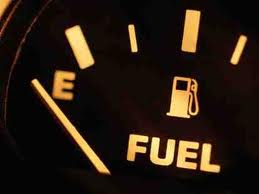Leadership requires a tremendous amount of energy. When things go poorly it’s easy to become discouraged and emotionally drained. When things are going well the momentum of winning can mask the amount of personal leadership fuel that you’re burning through. In both good times and bad times, high times and low times leadership requires a tremendous amount of energy.
That’s why you need a plan to shorten your leadership recovery time.
Think “Energy” not “Effort”
Effort is too simple a way to look at things. If you’re a successful leader then of course you’re going to give a good effort. You need to think more about managing your energy than your time or effort. Make a list of what (or who) gives you energy and what takes it away and respond accordingly with your schedule. It’s possible to work hard and give a great deal of effort and time to something and afterward feel great because you gained energy from doing it.
Determine your “Finish Line”
Every day set a finish line for yourself. It may be different each day but set a finish line. It may be after a project, a particular meeting, a particular time or an end of the day routine you have. It’s a moment where you’re going to set it down, push it aside and turn it off. A moment where your family and those you care about the most get your attention instead of your work. Win the day by getting to your finish line each day.
Take Personal Ownership
The quickest way to recover from a leadership misstep or failure is to take personal ownership. Don’t shift blame or point fingers. Simply shoulder the responsibility for what went wrong. Even if it was someone else downline that made a mistake, you’re the one who put them in that situation by hiring them, training them, resourcing them and communicating to them about the initiative. The first-place great leaders always look when things go wrong is to themselves and what they could have done differently to make thing more successful. This also shortens their recover time dramatically because they aren’t shifting and searching for someone to blame and they get on the solution side of things quickly.
What’s your Personal Replenishment Cycle?
Once you’ve determined what gives you energy the next step is to calendar it. The two most spiritual documents in the world are the Bible and your calendar. The Bible is where you learn about what God wants for you and your calendar is where you put it into action. What are the 3 – 5 things that you are going to calendar weekly, monthly, quarterly and yearly to replenish yourself? After all the Church is not responsible for church staff burnout the church staff are.
Talk “With People” not “About Them”
Nothing creates more sideways emotional energy in organizations and churches than talking about people instead of talking to them. You can’t do anything about a problem that’s not in the room.


Leave a Reply